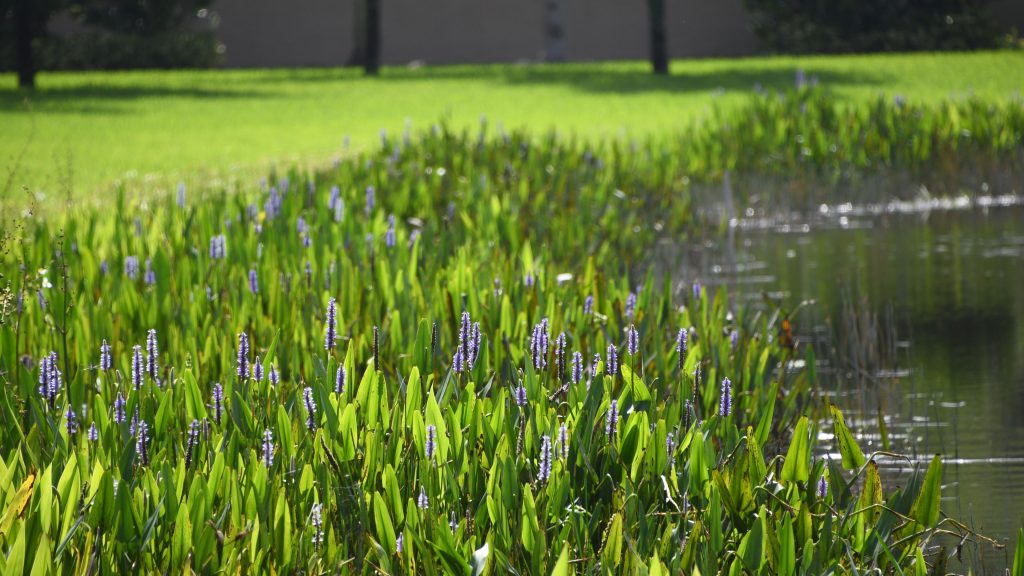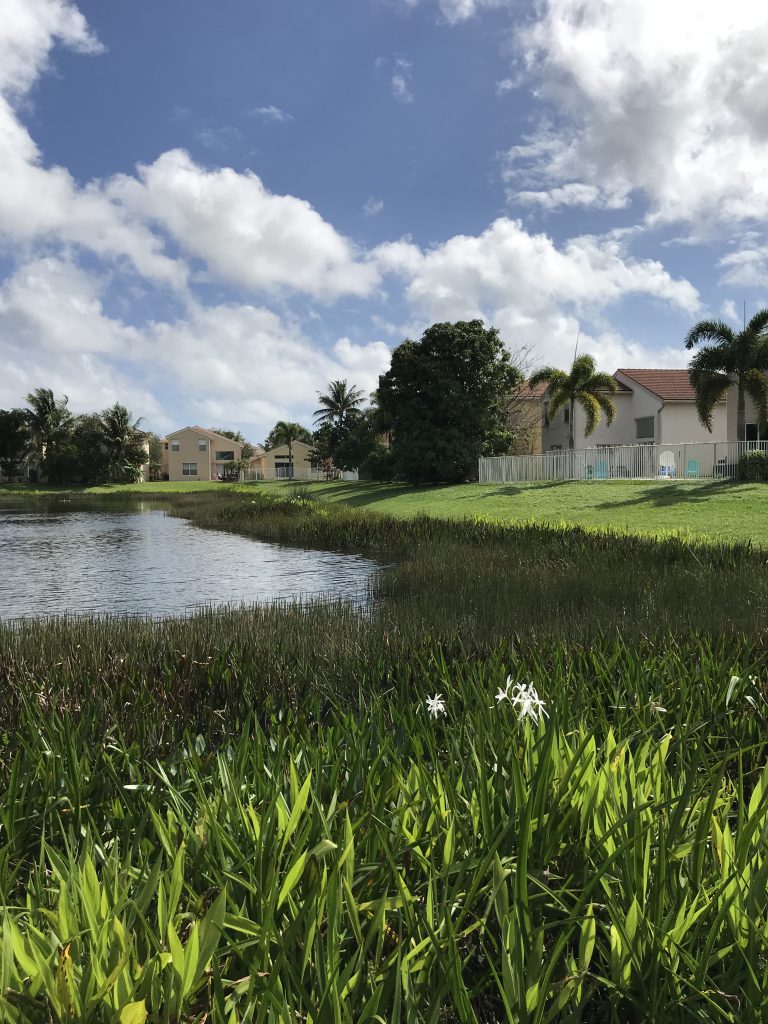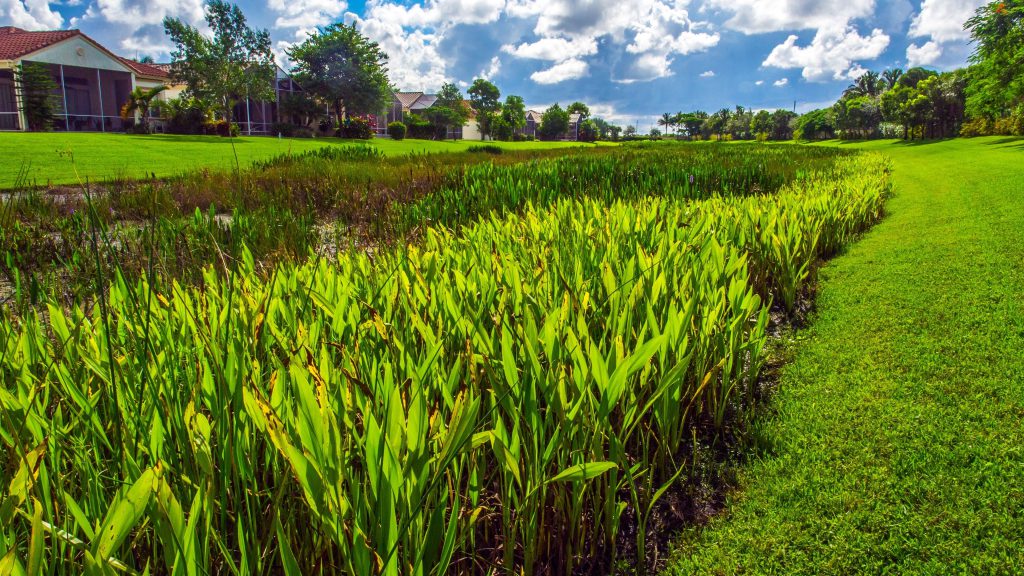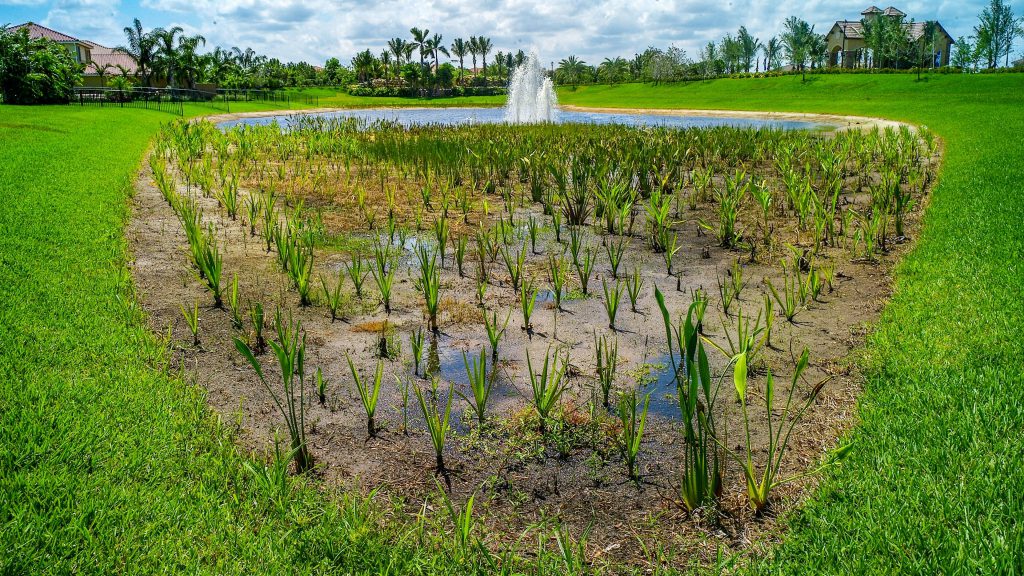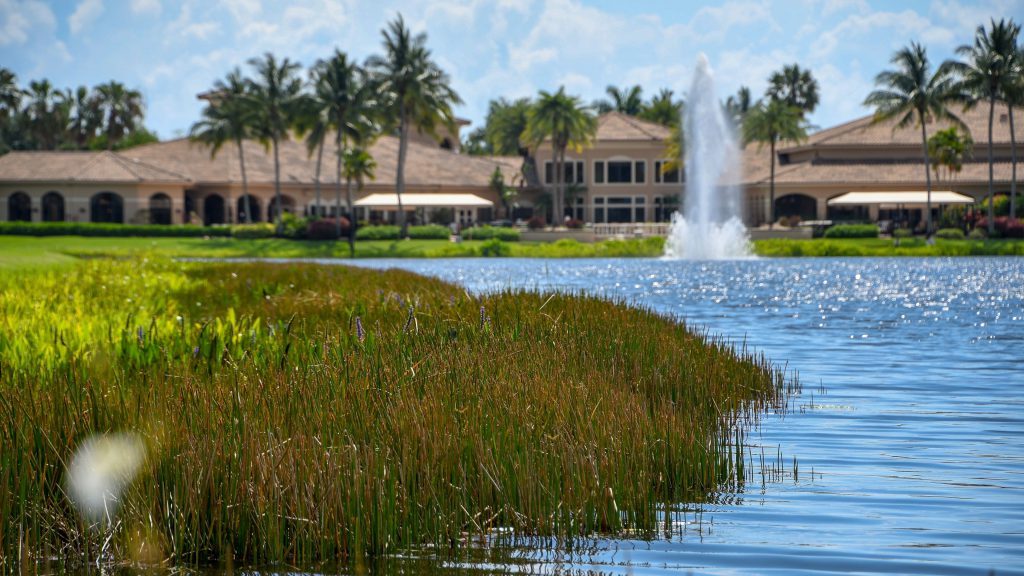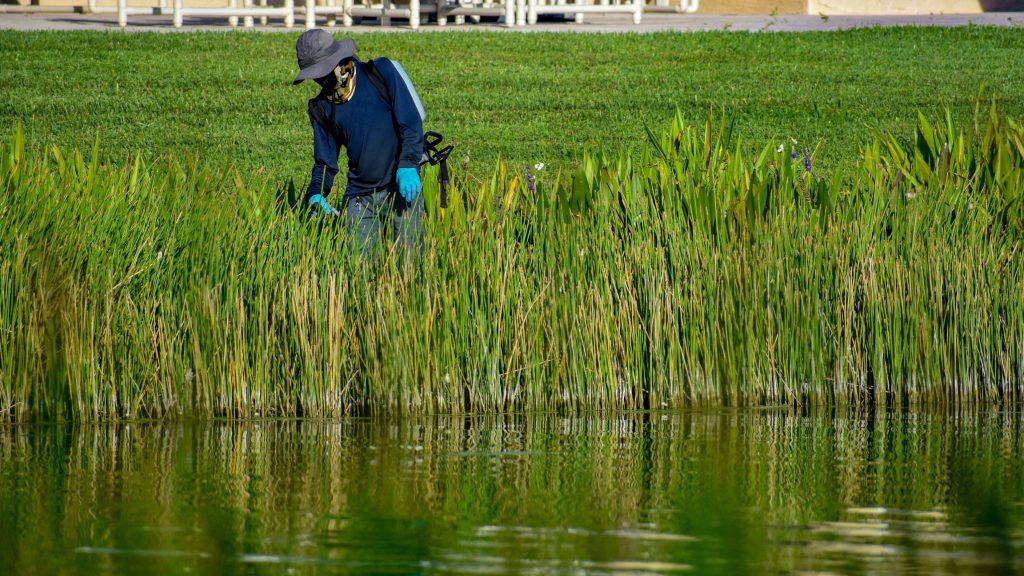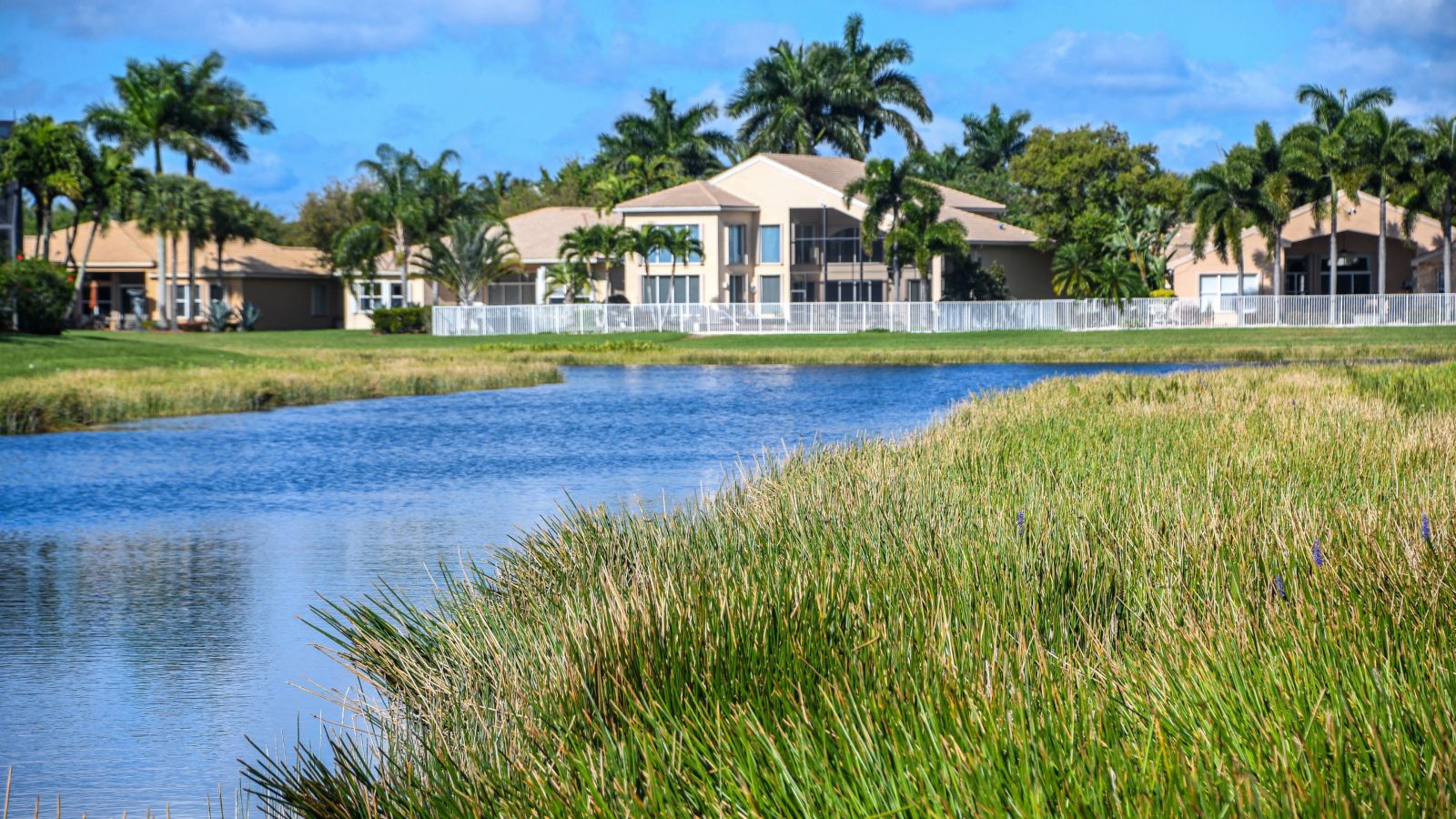
Littoral Zone Management for Lakes & Ponds
Lakes, ponds, and wetlands provide more than just beautiful scenery. They are essential features in our communities and key indicators of environment health. A wealth of water quality insights can be gained from an area called the littoral zone, or littoral shelf.
This is the sloped space where the water meets the land, resembling a wetland. It is often the most fertile and complex part of a waterbody. A multitude of fish and animals inhabit the shallows where both floating and submerged plants thrive in the sunlight, create cover, and produce plentiful levels of dissolved oxygen. Well-tended littoral zones can be a valuable asset to a community by enhancing beauty, improving safety, and increasing property values.
The Littoral Shelf Provides Diverse Benefits
A diverse littoral shelf helps support a healthy aquatic ecosystem from top to bottom. In addition to nurturing communities of fish and wildlife, littoral zones foster biological bacteria, zooplankton, and other beneficial organisms that serve a critical role in the foundation of the food web.
Littoral areas are also the first line of defense against nutrient pollution. As phosphorus and nitrogen flow into the water during rainstorms, they are intercepted by native plants to be used as fuel, rather than sustaining nuisance aquatic weeds and algae. This, in turn, prevents water stagnation, cloudiness, bad odors, and muck development.
Help Reduce Erosion Damage with Native Buffer Plants
As the space that joins water to land, littoral zones help stabilize the bank and prevent chronic erosion problems. Littoral plant species grow deep into the soil to form a natural containment barrier, increasing the longevity of lake and pond shorelines and preventing volume loss. When cultivated along the shoreline, native flowering plants also help attract beneficial birds, dragonflies, and other predators that feed on mosquitoes and midges.
The plants found in a healthy littoral shelf can vary based on region. Littoral zones in the south and Florida benefit greatly from flowering species like golden canna, passion vine, penstemon, and jewelweed—to name a few. Conversely, areas like the Northeast often see littoral plants like cardinal flower, blueflag iris, swamp milkweed, and wild columbine. It’s best to discuss with a local lake and pond management expert to determine what’s right for your property.
Littoral Zone Maintenance
Though littoral habitats are robust and full of unique life, they are also delicate and easily disrupted by urban development, erosion, and recreation. When inundated with pollutants and runoff containing pet waste, motor oil, yard fertilizers, grass clippings, and materials resulting from industrial and agricultural practices, littoral zones can degrade. This creates conditions for nuisance weeds, algae, toxic cyanobacteria, and invasive species to take over.
Adopt An Integrated Management Strategy
Littoral zones are best managed proactively using natural management techniques that increase dissolved oxygen levels, limit sedimentation, and eliminate excess nutrients. Responsible management also means evaluating the chemical composition of the lake or pond on a recurring basis through water quality testing. By creating a baseline profile, it is possible to track the onset of imbalances and intervene before undesirable conditions manifest—without relying on short-term solutions like herbicides and algaecides.
Protect the Littoral Zone with Annual Management
One of the most effective ways to cultivate a healthy littoral shelf is through an annual management program, which provides ongoing monitoring and maintenance for lasting results. A SOL Pro Annual Management plan includes a complete toolbox of environmentally-friendly solutions that are backed by the latest technologies and innovations.
Who We Are
At SOLitude Lake Management we’re dedicated to making water a more healthy and beautiful part of our environment and our world. In that pursuit we offer sustainable, comprehensive lake and pond management solutions.








